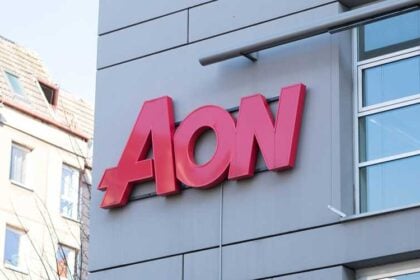The critical Cyber Week sales are nearly upon us, but in the op-ed, Roxy Dinh, client partner – retail at Snap Inc., insists that there is time to do some last-minute preparation to make the most of this vital shopping event.

‘Tis the season. You couldn’t help but notice the signs cropping up next to the Halloween sweets and pumpkin displays. Now, with Halloween just passed, we’re already talking about the next cultural shopping moment. No, not Christmas – Black Friday and Cyber Monday are on their way and retailers are already gearing up, hoping for a bumper sales season.
Goodness knows they need it. It’s been a shaky year with consumers nervous about the economy and pumping the brakes on spending, so the pressure is on to make Q4 and the lesser known Q5, the strongest sales cycle yet. While there’s undoubtedly a world of opportunity, it’s going to be a highly competitive bunfight to secure consumers’ attention. By playing smart with their ad budgets, targeting key audiences and using this sales cycle to build relationships, not just a discounting smash and grab, retailers could finish the year strong.
First, the audience. It’s a broad brush to start with but there’s no denying the combined purchasing clout of Millennials and Gen Z. Together, they have a worldwide purchasing power of US$4.4 trillion.
This is more than about switching the message, we’re also talking about optimising your channel mix too. Social platforms which include ‘buy now’ functions have always been a target platform for Black Friday and Cyber Monday advertising, but targeting Gen Z and Millennials means sharpening the media mix further.
In-store shopping, for example, is making a comeback but is boosted by mobile phones in real time. A true omnichannel experience is the only option here – whether Gen Z is snapping trends to share, browsing in-store to buy online or researching via mobile to go in-store, brands must answer each distinct need.
Shopping is also now a collaborative effort. More than three-quarters (78%) of Gen Z and Millennials include their friends in their shopping journey. Across Snapchatters, that’s even higher at 92%.
Therefore, how retailers approach their Black Friday/Cyber Monday strategies also has to change. You can’t have the same plans as you had last year. In such a competitive marketplace looking for ad space can be an expensive business, and the landscape changes so often that it’s important to constantly reevaluate. Diversifying your marketing mix is more effective and cost efficient.
As annual Black Friday/Cyber Monday events have a firm fixture on the calendar, each year both brands and platforms learn ever more about how to win during the extended shopping season.
An important first step is to find out what the most up-to-date best practices are across media channels. To ensure you’re set up for success, reach out to the platforms and ask them what works, or have this conversation with your agency. On Snapchat, we’ve found that during major shopping moments, the campaigns that have a stronger learning phase out perform the campaigns that go live on the day the sale starts. And try not to tinker. To maximise the performance of the campaign, avoid any edits during the learning phase. During September we partnered with a range of major local retailers to establish our latest best practices for this key moment, and these tests showed an average 1.3-1.6x return on ad spend (ROAS) uplift by following these guidelines.
While early planning is always recommended, launching your holiday campaigns in November still offers significant benefits. You can engage customers before the peak season rush and start building signals to really hone in on your audiences. Some of these sales start from early November and continue right up to Christmas so getting the customer’s attention as early as possible will see you in good stead. It also gives you space to test, which is essential if you’re to deliver highly effective ads during these high traffic periods.
Testing is one thing but brands can’t overlook the importance of leveraging product catalogues strategically during key sales periods to help handle peak demand and highlight their top products. Integrating catalogues with targeted advertising on platforms like Snapchat allows brands to reach high-intent shoppers and maximise ROAS. For example, a major beauty retailer saw ROAS more than double and cost per purchase (CPP) decrease by over 50% using this strategy.
It may seem that there’s already a lot on your pre-Black Friday plate, but it’s worth considering one more thing, and that’s Augmented Reality (AR). A mainstay of a huge and growing number of brand campaigns, including AR tools such as try-on or visualisation features really delivers returns – we’ve seen 92% higher conversion rates when consumers interact with products through AR, and 3.5 times higher ROAS with 69% lower cost per purchase with AR-enabled Snap Ad and Story Ad campaigns.
And what of the post-Black Friday blues? Time to briefly shut up shop and gather your wits for the next push to Christmas? Sitting on your laurels, even after a successful Cyber week sales event would be a mistake. Cyber week is a key discovery period for a lot of shoppers and many go into the Black Friday sales with a gifting for Christmas mindset.
Instead of treating Cyber week as a separate campaign to Christmas, now it’s time to start thinking about data. What audiences were searching for which products. Who viewed products but never added to cart, or who added to cart but dropped it at the final hurdle. These are all key moments to re-engage and remarket during the latter stages of the November/December shopping period.
And remember, after the chaotic, compressed Cyber Week seriousness of campaigns that are designed to deliver immediate action, Christmas brings an opportunity for a bit of festive fun. Swap the frenetic for the frivolous with playful messaging that excites and engages consumers for Christmas.








